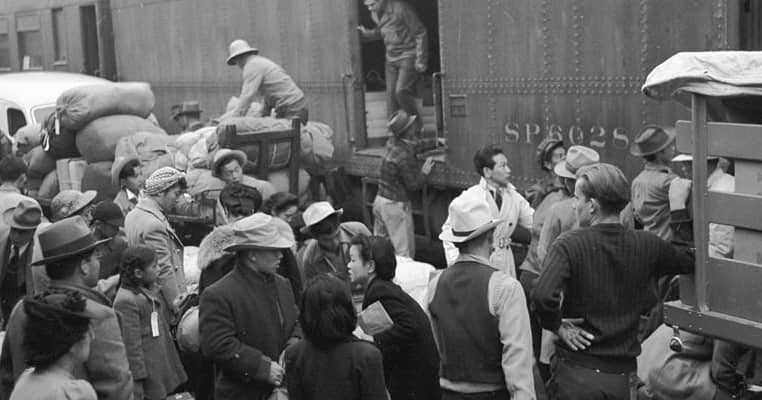During the First World War the large German communities in many American cities found themselves under siege. In cities such as Cincinnati and Milwaukee, streets which bore names in German were renamed using American values and heroes. German language newspapers and magazines were banned. Anti-German sentiment thrived in the United States, and German neighborhoods became the scenes of demonstrations against the Kaiser and his Austrian allies. But the German-Americans were not displaced and isolated, sent to camps where their activities could be closely monitored by government entities, nor were they forced to give up their rich traditions, many of which had been fully absorbed into American society.

During the Second World War, the Japanese were not so fortunate. Partly due to the nature of the attack on Pearl Harbor, partly due to fear of a Japanese “fifth column” and partly due to racial prejudice, the Japanese Americans on the West Coast of the United States were subjected to displacement and isolation in what the American government called relocation camps. Officially, the camps were intended to provide shelter and security for Japanese Americans, as well as re-education and indoctrination into American values. Decades after the war, the United States government accepted responsibility for the violation of civil liberties the camps entailed, and President Ronald Reagan formally apologized to survivors and their descendants. Reagan signed legislation which admitted the camps were partly the result of “racial prejudice…and a failure of political leadership”.
Here are some examples of life in the internment camps, and the war hysteria which led to their existence and maintenance, a dark chapter in the history of human rights in the United States.

1. Japanese Americans in the United States and territorial possessions before Pearl Harbor
Japanese immigration to the United States was curtailed in the early twentieth century by mutual agreement between the American and Japanese government, but not before several hundred thousand arrived on American soil or in the territory of Hawaii. In the Hawaiian Islands they were accepted as a needed labor source on the sugar and pineapple plantations, but those who went to the mainland found the welcome less warm. Despite the reduction in immigration brought about by the ban on unskilled laborers entering the United States the Japanese-American population grew through natural means, and many of the 180,000 or so who immigrated to the West Coast remained in that region, their descendants creating businesses, farms, and extended families. Resentment developed against them in many quarters, including California. The immigration ban of 1924 led to sharply defined Japanese generational groups.
First generation Japanese, those who entered the United States prior to 1924, were called the Issei. Their immediate descendants, born in the United States, were by definition American citizens and called the Nisei. Issei were prohibited from becoming American citizens, thus the parents were dependent upon their children for the ability to purchase or rent property. Japanese communities developed in large West Coast cities in a manner similar to the Chinatowns which thrived in an earlier age. In rural areas, the Japanese contributed to the cultivation of crops, especially fruits and vegetables, by introducing different irrigation techniques. Several anti-Japanese groups developed in western states, including the Asiatic Exclusion League and the Native Sons of the Golden West, which turned their previously anti-Chinese propaganda against the Japanese, warning their fellow Americans of what they called the Yellow Peril.

